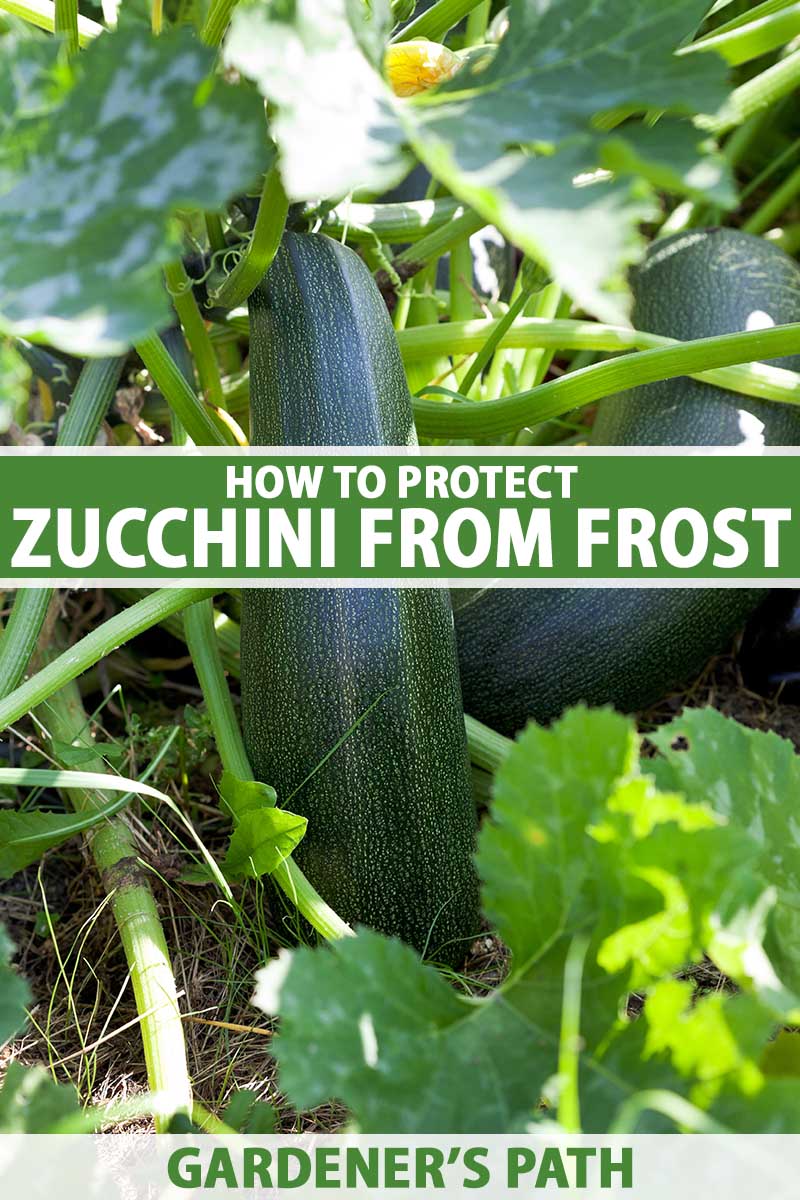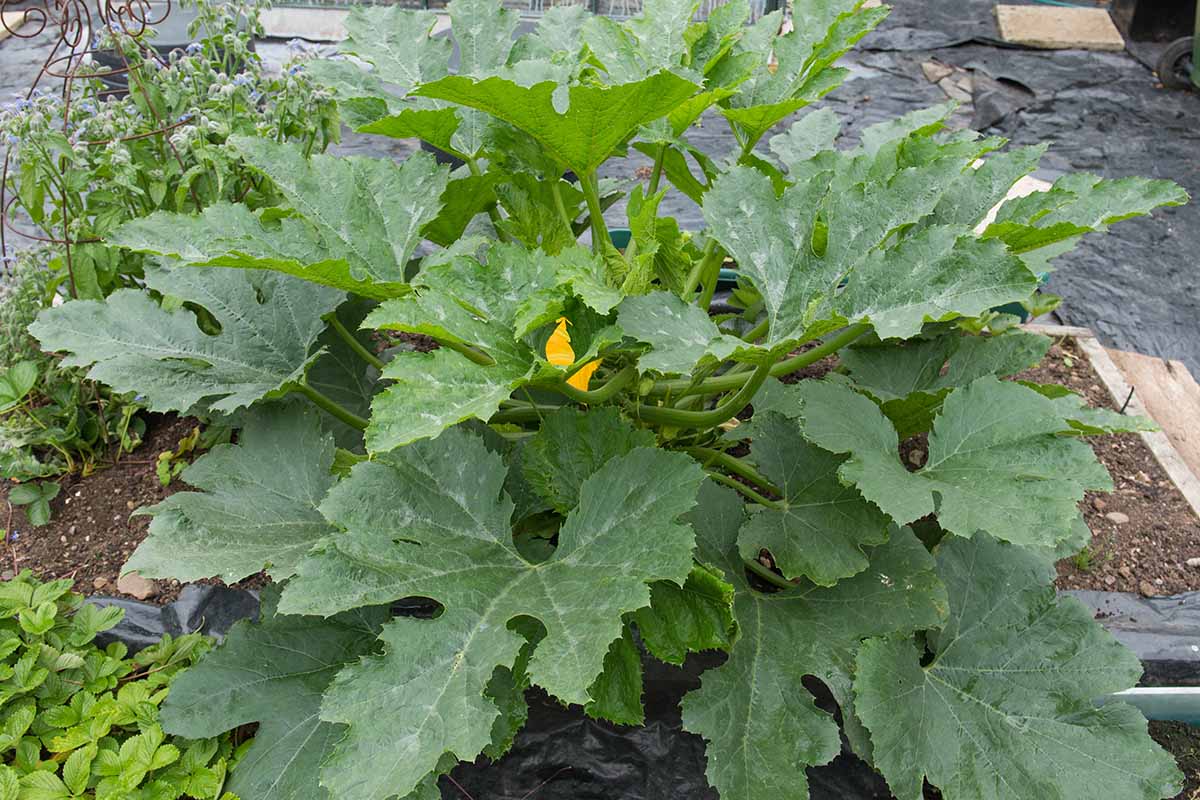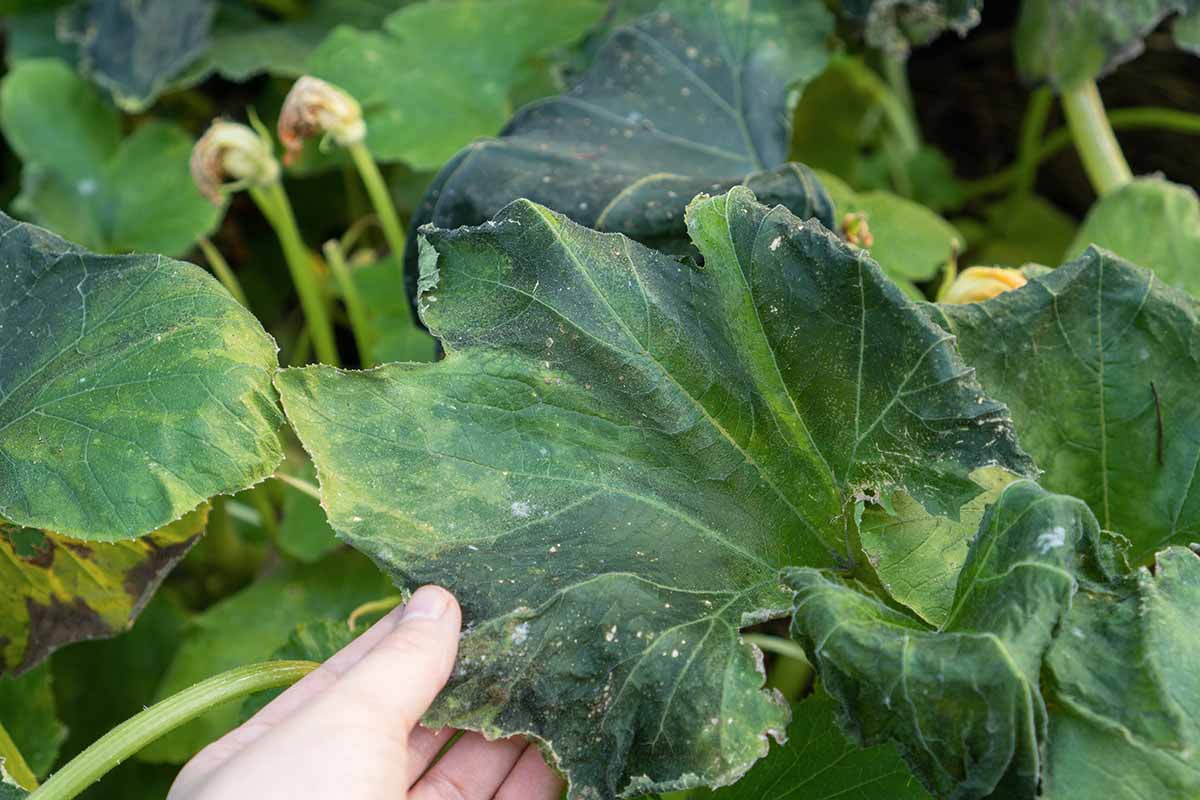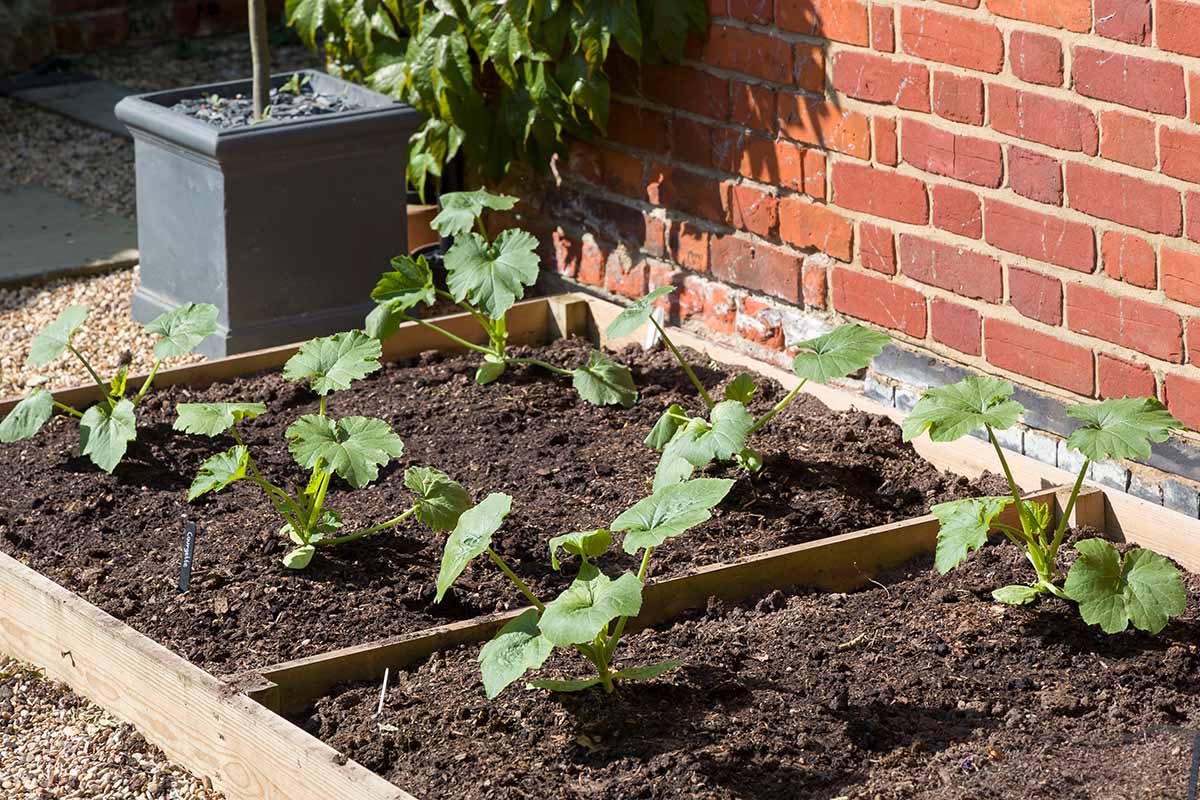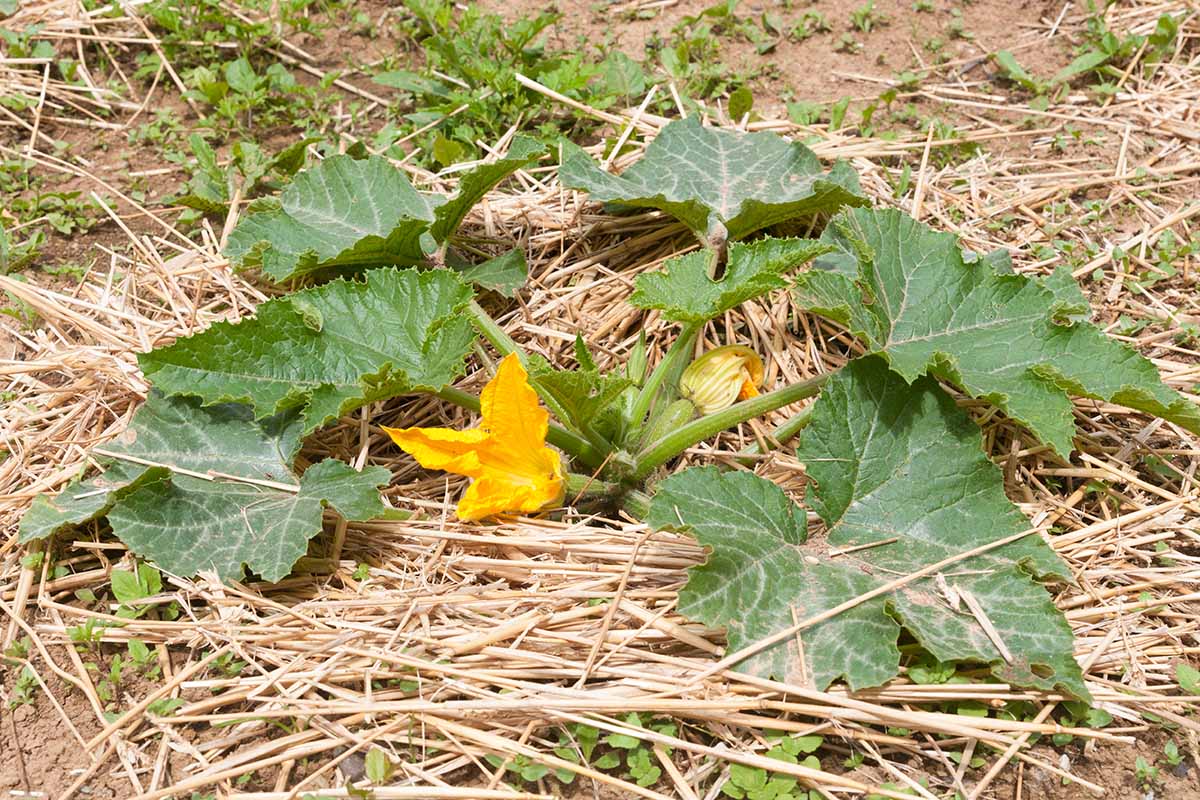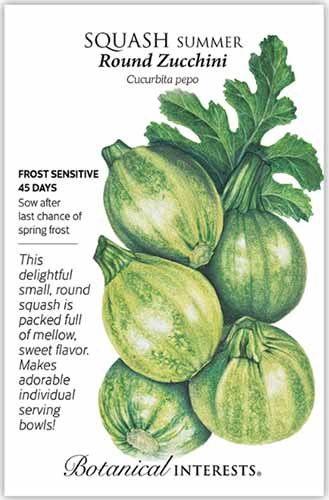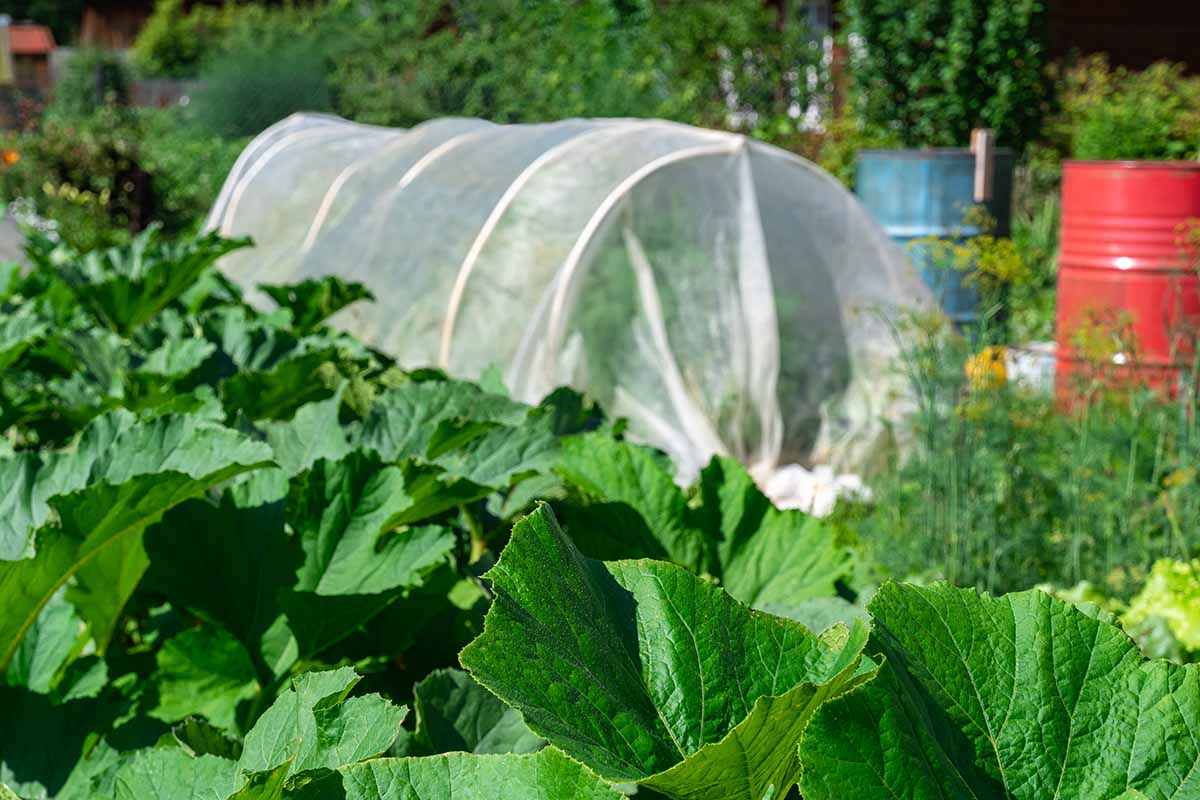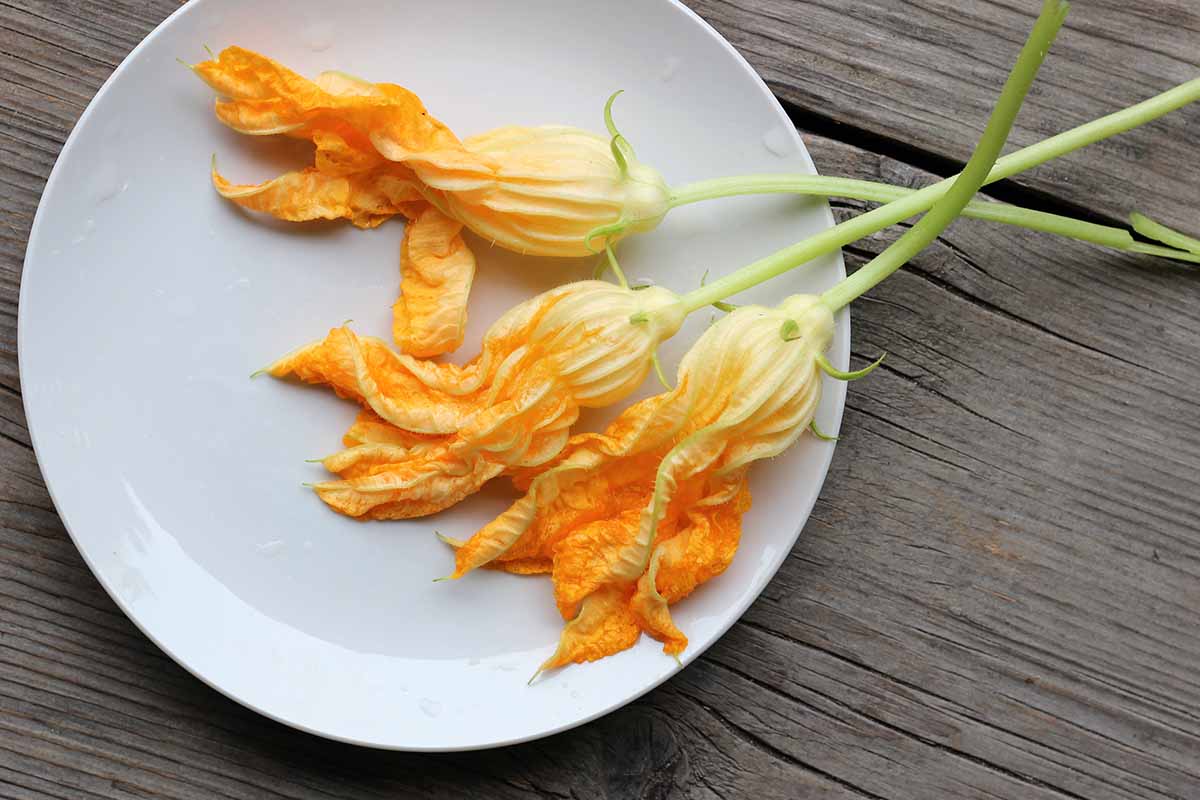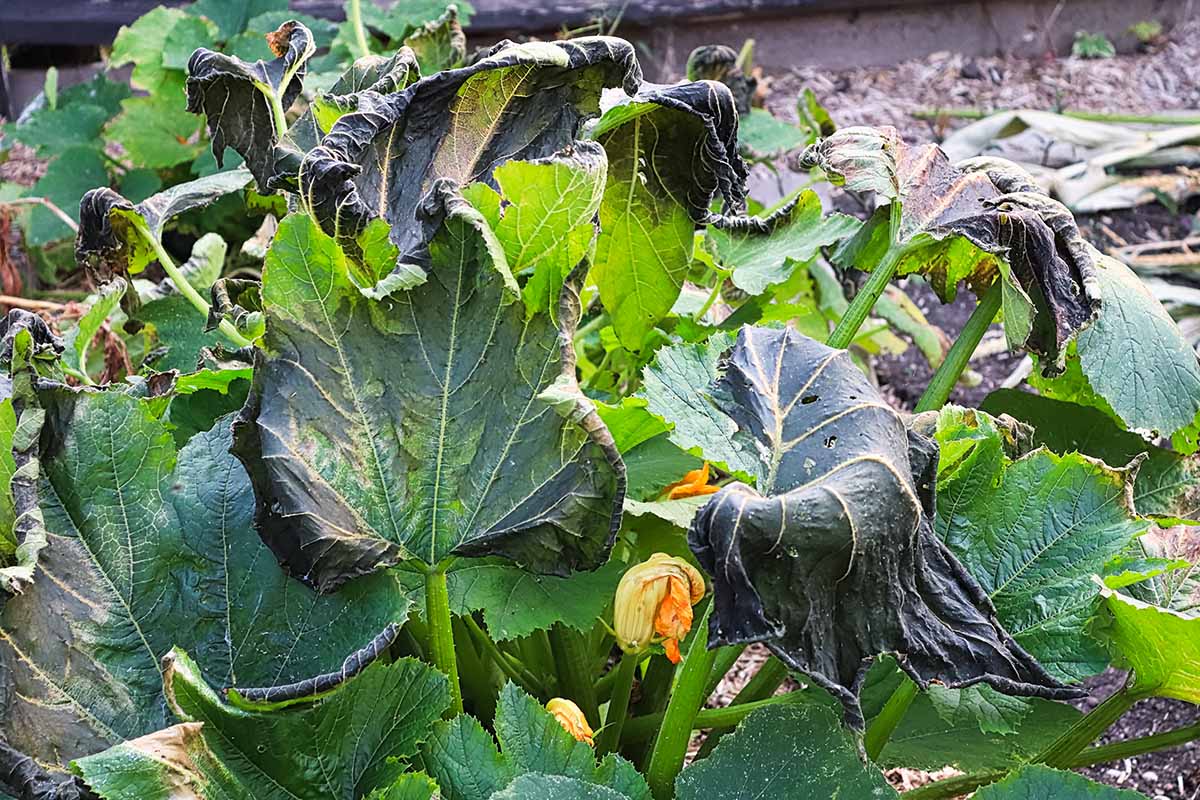But when the plants themselves are frozen in your garden, that’s the – ahem – polar opposite. We link to vendors to help you find relevant products. If you buy from one of our links, we may earn a commission. The reasons zucchini bushes or vines suffer frost or freeze damage can range from your own poor planning to a fluke in the weather to a calculated risk you took that didn’t work out. But don’t be discouraged! Happily, there are a few strategies you can use to protect these summer squash if wintry weather looms. There are also steps you can take to avoid zucchini frost damage altogether, including some that you undertake before sowing, and others that have a positive impact if they’re enacted later in the season. Want to keep your zukes from getting too chilly? Follow along as I cover these topics:
When to Try Frost Protection
Zucchini, Cucurbita pepo, is prolific, fast-growing, and inexpensive to plant. It also yields one of the tastiest, most filling, and most versatile vegetables on the planet. With that said, zucchini are not ideal candidates for gardeners who wish to use artificial measures to extend the season too far into the cool-weather months. For one thing, they grow quite slowly after temperatures dip to 60°F or so. You can’t expect a bonanza of fruits after the onset of consistently chilly weather. Also, most varieties depend on pollinators to yield those lovely green, yellow, or flecked squash. If you plant yours too late in the season, it may not be pollinated adequately to produce a harvest. And any time the nighttime temps fall below 33°F, you can expect damage to the leaves and the plants may die. Should the freeze grow colder still, with temperature plummeting below 28°F, it’s unlikely you can save the plant even using a row cover or plastic to protect them. If you’ve had an ample harvest and don’t anticipate a return to daytime temperatures above 60°F, I would discourage you from expending the time and effort to frost-proof the plants. Any gardeners who have just been caught out with thriving plants and an unexpected freeze warning should read on for solutions. All others can take this wisdom to benefit next year’s crop. And if you need a refresher on how to grow zucchini, check out our guide.
Last-Minute Strategies
So it’s early autumn or late spring and you’ve either miscalculated, or the weather is going nuts and there is a freeze on the way. Now what? If it’s early spring and you’ve put your plants out too early, it’s your choice. You can put your energy into placing a cloth or plastic cover over them ahead of the freezing nighttime temperatures in the forecast. Or, if you can bear to, you can let the transplants freeze, pull them, and sow new seeds, either indoors or outdoors. I know that sounds heartless! But honestly, unless you’re growing dozens of unusual zucchini cultivars that cost six dollars for a 10-seed packet, you probably still have plenty of seeds left to sow anew, and they tend to sprout in less than a week. Later in the growing season, you may want to take the time and invest the resources to protect your plants from that too-early frost or freeze, especially if you don’t anticipate more than a few days of cold temps before a return to zucchini-friendly weather. Your first line of defense against early autumn frost is covering the plants at night. You can use cloth row cover, household blankets, plastic, or newspapers to insulate the plants and increase the ambient air temperature by a few degrees. Anchor them with several bricks or other heavy objects that are impervious to freezing, like logs. This isn’t the time to use canned goods! Also, consider the heavier type of “frost blanket” row cover intended to prevent freezing by increasing the ambient air temperature as much as 10 degrees. SunPro Plant Covers When your plants just need protection for one or two nights, you can skip the support structures like hoops or a cold frame in favor of draping the cover over the plants. Do make sure the covers don’t flap around and injure your zucchini, or end up letting cold air in. Learn more about using row covers to protect plants in our guide. When you’re using plastic, make sure it doesn’t touch the leaves, or you’ll freeze the very foliage you’re trying to protect. And remove the covers in the early morning each day. If the sun hits them later, it can overheat the air inside and wilt the plants.
Minimize Frost Damage Risk
I’m one of those gardeners who would rather avoid the threat of frost whenever possible, instead of going to all the fuss and incurring the added cost of protecting the plants ahead of a freeze. If you have a similar mindset, here are a few ways to decrease the odds your zucchini plants will freeze early or late in the season:
Don’t Sow Outdoors Too Early
It’s so tempting to attempt to plant seeds ahead of the recommended growing window, but zucchini really do need warm soil of at least 60°F to germinate and grow. And while you may earn a few extra-early zucchini by sowing or even transplanting during an early warm spell, it’s usually not worth the risk. Should cool weather return for more than a day or two, it’s just too tough to try to warm the cool spring air or chilly soil beyond a few degrees.
Mulch and Water Well
Not only does a heavy layer of mulch help keep the ground warmer, but it will also prevent weed growth and help the soil to retain water. All of these benefits will assist your zucchini plants in growing and producing quickly, well ahead of the onset of chilly weather that could kill them. It’s the same with providing consistent watering throughout the growing season. It allows these plants to grow vigorously, and healthy specimens will yield a bumper crop long before you must worry about Jack Frost’s arrival in an average year.
Start Seeds Indoors
Instead of trying to get a jump on the season by sowing early outdoors, only to see your seedlings succumb to cool temps, consider starting seeds indoors if you live in an area with a short growing season for summer vegetables. You can lop a week, 10 days, or sometimes more off your growing cycle just by selecting an early zucchini variety. Disease-resistant ‘Elite,’ for example, is a hybrid that takes about 46 days from sowing to produce high yields of six- to seven-inch, cylindrical, dark green fruits. ‘Elite’ You can find seeds available from True Leaf Market. The ‘Baby Round’ cultivar starts producing two-inch round, light green zucchini 45 days from sowing. ‘Baby Round’ It’s available to you for growing at home in 22-seed packets from Botanical Interests. In contrast, the popular heirloom ‘Black Beauty’ takes more like 60 to 70 days to mature from sowing, and ‘Caserta’ takes about 65 days. These types sit at the upper end of the range of days to maturity that you’ll see on your seed packets, and they may not be the best picks for those with short seasons and early frosts. You can find more info on sowing annual vegetable seeds indoors in our guide. Start the seeds just two to three weeks ahead of the average last frost date in your area. That gives them about a week to sprout and another two to attain to a proper size for transplanting, but not so much time that they get too large. Zucchini doesn’t typically produce at its typical enthusiastic rate if your transplants are more than a couple of weeks old before you get them in the ground or a raised bed.
Plant Where You Can Easily Protect Them
If you’re one of the folks who likes to push the season a little bit, planting zucchini later in the hope that a freeze won’t catch it, I also recommend minimizing your risk of frost damage by sowing or transplanting in a spot where you can easily place row cover or other frost protection later as needed. If I’m pushing the limits of our frost-free growing days into late autumn here in Tennessee, I’ve been known to go ahead and plant the squash in a cold frame, removing the top. If my plants need more protection later in the season, it’s easy to place the top back on, no additional anchoring or messing with fabric required. Just be sure to vent or open up those cold frames again as needed!
Consider Container Gardening
While it involves more frequent watering and fertilizing, growing zucchini in a container can help you avoid unexpected frost or freezing temperatures. Choosing a container of manageable size that’s still big enough to sustain their growth makes it simple to throw a row cover over your plants, or take them to a protected area or even inside if cold temps threaten. Select a compact bush variety if you’re opting for containers, so the plant doesn’t become too large and tough to move. You’ll also benefit from placing the container on a rolling plant cart so you can move it easily if adverse weather conditions are on the horizon.
Cut Your Losses
When you’ve resigned yourself to the idea that Old Man Winter or Jack Frost is going to take out your zucchini whether you like it or not, there’s still an opportunity to make the best of the situation. First, make sure to clip even the tiniest squash from the plant to eat or freeze. Don’t overlook any blossoms either, which are tasty to eat in a salad or to batter and fry – or air fry! If your plants have bugs or diseased patches, go ahead and pull them and destroy them ahead of the freeze. Get all the weeds out, too, so none of these vegetable garden foes will live on during the winter. If they’re still healthy, go ahead and pull them and add them to the compost. It’s a lot easier to work with squash plants before they freeze and become all mushy. It’s also more enjoyable to put your vegetable garden to bed on the early side so you won’t need to toil in cold weather or work with bone-chilling soil. And once you clear that space, it will be available for heavy mulching, a cover crop, or maybe a crop that thrives in cool autumn weather, like winter radishes or kale. Learn more about the best cool-weather crops to grow for a productive fall garden in our guide. When you’ve vowed to grow more of your own food, it’s an easy-care choice for beginner gardeners, old hands, and those with a renewed interest in edible crops. With all those positive traits, it’s well worth the time required to pursue new ways to extend the season or maximize the harvest with whatever time your area’s growing season allows. If you find yourself anticipating frost or needing to protect plants from a surprise freeze in early autumn, well, succeeding can offer ample rewards. And be sure to write down the details of those frost dates and what you did that worked in your gardening journal, as well as what didn’t, so you can reference it in years to come. Do you have any tips for protecting these prolific garden vegetables from frost? Or any questions about aspects of the process that weren’t covered here? The comments section below awaits your input. And if you’re interested in more zucchini growing tips, take a look at these guides next:
When and How to Prune Zucchini PlantsWhy Zucchini Blossoms Drop and What to Do About ItHow to Fertilize Zucchini Plants
